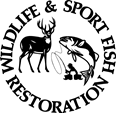Lake Naconiche 2015 Survey Report  (PDF 498.5 KB)
(PDF 498.5 KB)
If you have difficulty accessing the information in this document, contact the TPWD Inland Fisheries Division for assistance.
Lake Naconiche - 2015 Survey Report
Prepared by Dan Ashe and Todd Driscoll
Inland Fisheries Division – Jasper District
This is the authors' summary from a 31-page report. For a copy of the complete report, use the download link in the sidebar.
Fish populations in Naconiche Reservoir were surveyed in 2015-2016 using electrofishing and gill netting. Anglers were surveyed from March through May 2016 with a creel survey. Historical data are presented with the 2015-2016 data for comparison. This report summarizes the results of the surveys and contains a management plan for the reservoir based on those findings.
Reservoir Description
Naconiche Reservoir is an impoundment of Naconiche and Telesco creeks, tributaries of the Attoyac Bayou in the Neches River Basin. The lake was constructed by the County of Nacogdoches for recreation and flood control. This reservoir has a surface area of 692 acres at conservation pool (348 feet msl), a shoreline length of 22.7 miles, and an average depth of 13 feet. Access is available with a two lane boat ramp and an ADA-approved fishing pier. Bank access is adequate. Primary fish habitat is hydrilla and timber.
Management History
Important sport fish include Largemouth Bass and Black Crappie. The management plan from the 2011 survey report included stocking Largemouth Bass at 100 fish/acre every year. The reservoir was opened to the public in September 2012 with an 18-inch minimum length limit. Florida Largemouth Bass have been stocked annually since 2011. Hydrilla was first observed as the reservoir began to fill in 2008 and annual vegetation surveys have been conducted since 2012. Giant salvinia was introduced in 2015. Herbicide treatments and manual removal have limited coverage to < 5 surface acres.
Fish Community
- Prey species: Threadfin Shad and Bluegill were the most abundant prey species and provided ample forage for sport fish. Gizzard Shad were also present but abundance was low and few fish were available as prey. Electrofishing catch of Bluegills declined in 2015 and few fish were > 6 inches.
- Catfishes: Although Channel Catfish were stocked in 2009 and 2011, only two adult fish were collected from gill net surveys in 2014 and 2016. Channel Catfish recruitment has likely been limited by predation from the abundant Largemouth Bass population.
- Largemouth bass: Largemouth Bass were abundant; size structure and fish condition were good. Few legal-size fish were available to anglers. Largemouth Bass had adequate growth rates (age at 14 inches was 2.8 years). The Largemouth Bass fishery was most popular (86% of fishing effort), and the angler catch rate was 0.7 /h.
- Crappies: The crappie fishery was the second most popular (11% of fishing effort). Since 2012, angler catch rate and total harvest have declined. During the last three creel surveys, Black Crappie comprised nearly all of the angler harvest (only one White Crappie was observed).
Management Strategies
- Effective September 1, 2016, manage Largemouth Bass with a 16-inch maximum length limit.
- Continue stocking Florida Largemouth Bass annually at 100 fish/acre.
- Conduct additional spring electrofishing surveys in 2018 and 2020, and a standard fall electrofishing survey in 2019.
- Conduct a spring quarter creel survey in 2020.
- Survey giant salvinia coverage as needed to monitor effects of control measures.

Performance Report as required by Federal Aid in Sport Fish Restoration Act Texas Federal Aid Project F-221-M-6 Inland Fisheries Division Monitoring and Management Program